Alliances to Promote the Participation of Students with Disabilities in Science, Technology, Engineering, and Mathematics
Prepared by AccessSTEM and DO-IT Supported by the Research in Disabilities Education Program at the National Science Foundation
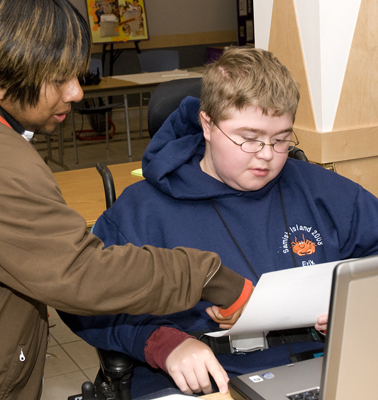
Diversity in STEM
Science, technology, engineering, and mathematics (STEM) play a role in wide-ranging issues, from the environment to health care. STEM includes diverse fields such as agricultural sciences, forestry, astronomy, ecology, psychology, computer sciences, and social sciences. To ensure high quality research and practice, it is important to recruit talented individuals from diverse backgrounds into STEM fields. A range of abilities and disabilities contributes to this diversity.
Some disabilities affect vision, speech, hearing, attention, learning, or mobility. However, most disabilities are not obvious. Invisible disabilities include, but are not limited to learning disabilities, attention deficits, autism spectrum disorders, and psychiatric conditions.
About the Alliances for Students with Disabilities in STEM
The Research in Disabilities Education (RDE) program of the National Science Foundation (NSF) funds research, dissemination, and Alliance projects that broaden the participation and achievement of people with disabilities in science, technology, engineering, and mathematics (STEM) education and professional careers. Projects contribute to knowledge regarding secondary and postsecondary STEM learning for students with disabilities and educational, social, and pre-professional experiences that influence their
Alliance Activities
Alliance activities take place in more than one dozen states and serve thousands of primary, secondary, community college, and university students with disabilities. Alliances provide research and industry internships, mentoring, and other evidence-based interventions for students with disabilities as well as professional development for educators and employees. The Alliances also act as a catalyst and resource for institutions and employers in their efforts to recruit and retain individuals with disabilities in STEM. They have distributed replication models, curriculum materials, checklists, videos, and other products. They contribute to a shared searchable Knowledge Base to maximize their impact.
A project data management system, implemented by NSF in 2010, serves to collect common participant and instructional data from all of the Alliances. It is designed to provide useful comparison data.
Searchable Knowledge Base
A centralized, searchable Knowledge Base of questions and answers, case studies, and promising practices can be found here. You can find answers to programmatic and technical questions at basic and advanced levels, learn about the success and experiences of individuals and programs, and locate links to publications and videos that support the advancement of people with disabilities in STEM.
Other Resources
Consult the RDE Collaborative Dissemination website for more information about RDE-funded projects and links to useful publications, videos, and websites that promote the success of students with disabilities in STEM fields.
Critical Junctures to STEM Careers*
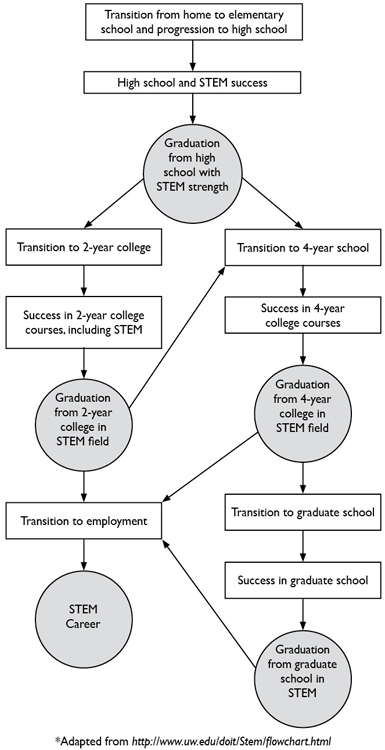
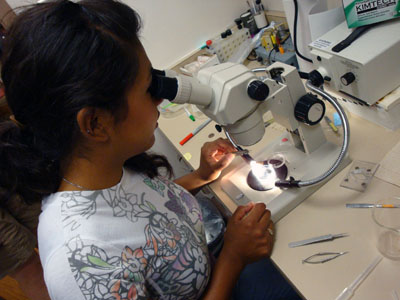
Moving Students Through Critical Junctures
Alliances include activities that affect student advancement through the following critical junctures toward a STEM career:
- from high school to college,
- between two- and four-year colleges,
- from undergraduate STEM degree programs to the workplace,
- from undergraduate to graduate STEM degree programs, and
- from graduate school to industry or academia.
Long-Term Impact
The flowchart and reference to the left provide details regarding critical junctures.
Ultimately, Alliance activities are designed to broaden the participation of people with disabilities and enhance STEM fields with their expertise and perspectives.
Alliance Descriptions and Contacts
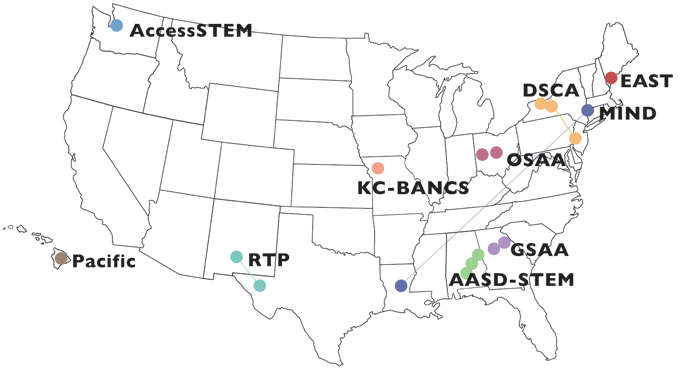
AASD-STEM
The Alabama Alliance for Students with Disabilities in STEM (South Alliance) is a collaborative research effort between Alabama State University, Auburn University, and Tuskegee University. The Alliance also includes Auburn University at Montgomery, Central Alabama Community College, and Southern Union State Community College.
AccessSTEM
The Alliance for Students with Disabilities in Science, Technology, Engineering, and Mathematics Phase-2 is based at the University of Washington Seattle and partners with Bellevue College, Seattle Central Community College, and Seattle Public Schools.
EAST
The East Alliance for Students with Disabilities in STEM Phase-2 is based out of the University of Southern Maine. EAST partners with Central Maine Community College and Kennebec Valley Community College.
GSAA
The Georgia STEM Accessibility Alliance is a collaboration between the University of Georgia and the Georgia Institute of Technology. GSAA also includes Georgia Perimeter College and Georgia secondary school districts in its partnerships to provide virtual world resources for students.
KC-BANCS
Building an Alliance for New Careers in STEM: A Collaborative Model for the Inclusion of Youth and Veterans with Disabilities is located at the University of Missouri-Kansas City and works in partnership with Metropolitan Community Colleges and Kansas City Kansas Community College.
Midwest
The Midwest Alliance is located at the University of Wisconsin-Madison, with subawards to the University of Illinois and the University of Northern Iowa, and serves students with disabilities in Illinois, Iowa, and Wisconsin. Midwest works in partnership with secondary and postsecondary institutions in the tri-state area.
MIND
The Alliance for Minority Students with Disabilities in Science, Technology, Engineering, and Mathematics has seven partners that serve students in New York, New Jersey, and Louisiana.
OSAA
Ohio's STEM Ability Alliance supports the attainment of STEM degrees and careers by students with disabilities in Ohio through programming at two regional centers based at Wright State University and the Ohio State University.
Pacific
The Pacific Alliance for Supporting Individuals with Disabilities in STEM Fields Partnership is based at the Center on Disability Studies at the University of Hawai'i Manoa and partners with Honolulu Community College and Windward Community College.
RTP
Reaching the Pinnacle is located at New Mexico State University and serves students with disabilities at twenty-seven postsecondary partner institutions in New Mexico and far west Texas.
What Alliances Can Offer You
Alliances engage in teleconference, email, and in-person communications to learn from one another and share experiences and resources. They collaborate in public forums, such as the National Science Teachers Association conference and jointly-sponsored workshops and conferences. Although each Alliance is unique, the following table provides examples of services offered by most.
Some of the services provided by RDE Alliances are listed in column 1. Examples of these services are listed in column 2.
| Services | Examples |
|---|---|
| Activities for precollege, college, and graduate students with disabilities. |
|
| Online and on-site professional development |
|
| Communities of practice |
|
| Journal publications and other resources |
|
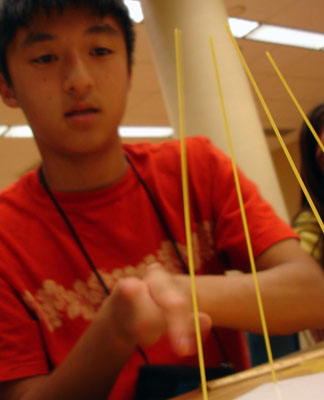
Acknowledgment
The Research in Disabilities Education Collaborative Dissemination is directed by DO-IT (Disabilities, Opportunities, Internetworking, and Technology), and funded by the NSF's Research in Disabilities Education program (award # HRD-0929006). Any opinions, findings, conclusions, or recommendations expressed in this publication are those of the authors and do not necessarily reflect the views of the NSF.
© 2011 RDE Collaborative Dissemination, University of Washington. Permission is granted to copy these materials for noncommercial purposes provided the source is acknowledged.
National Science Foundation, Research in Disabilities Education
Mark Leddy, Ph.D., Program Director; 703-292-4655;